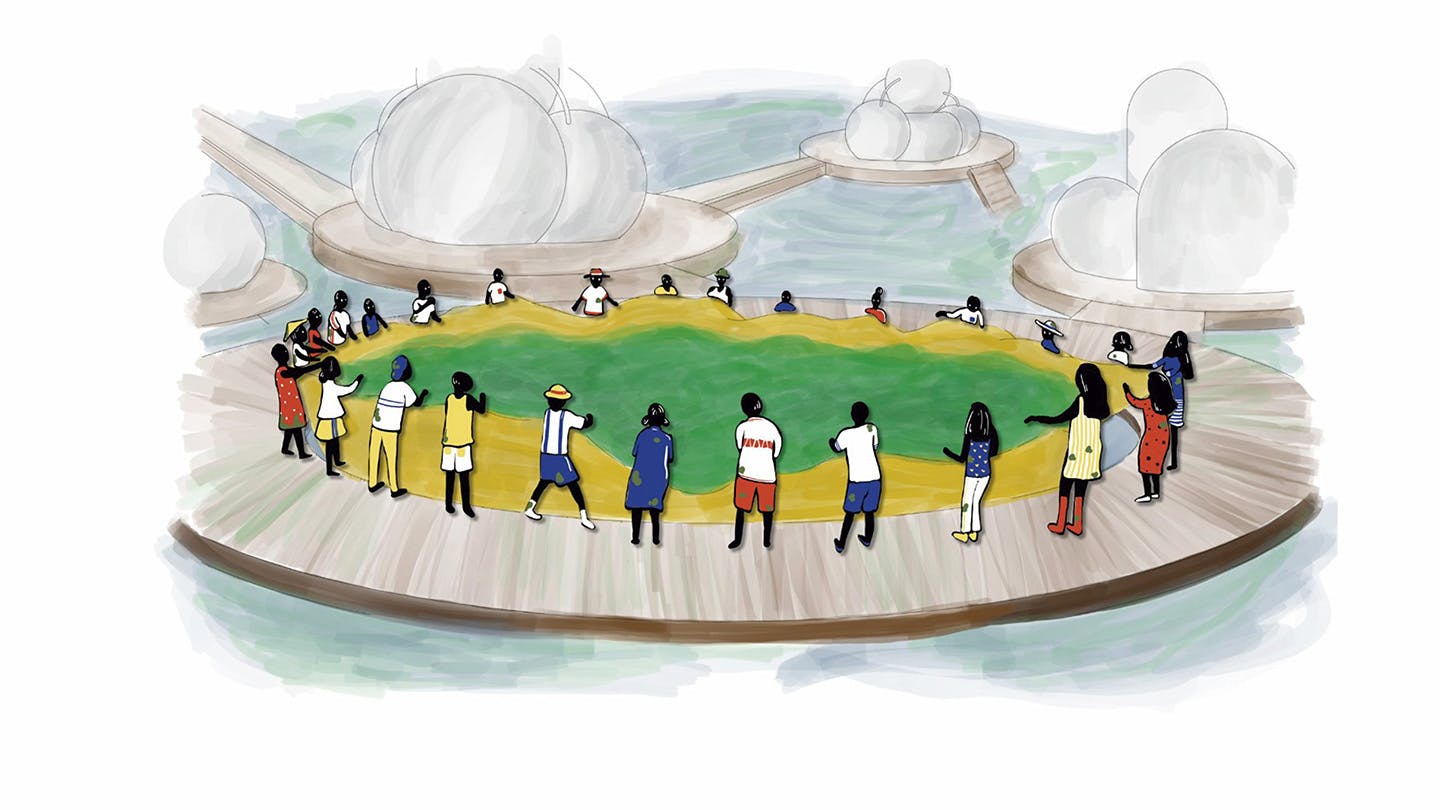
At Parsons School of Design, sustainability education is a core component of the curriculum, a feature evident in a recent MFA Interior Design studio course focused on climate change and NYC’s coastal communities.
Students in the class researched the effects of climate-driven weather events and rising tides for their work on NYC coastal residential interiors and developed innovative proposals expanding on traditional concepts of “green design.” Perhaps the most transformational change was a shift toward seeing climate change’s interrelated effects on all life forms in the ecosystem—not just humans—and imagining a more equitable coexistence among creatures. As a consequence, the students’ bold ideas promoted new kinds of relationships between humans and other creatures in the environment.
“One of the most challenging aspects of this course, as was discussed a number of times in class, was the tendency to research yourself into paralysis,” says second-year student Jonathan Escalante. “Making that jump from information to intervention is quite challenging when dealing with something as complex and delicate as a global ecosystem.”
Although the research phase of the course was intense and thorough, students also gained a new understanding of the collaboration necessary for addressing the climate crisis and the unique role an interior designer can play in the process.
“The most interesting part about this course was exploring examples of how architecture and interior design might work with the environment rather than against it,” says Teah Brands, also in her second year of the MFA Interior Design program. “Interior designers play an integral role in shaping how we believe our environment should look and function, so if we can redefine how ‘inside’ interacts with ‘outside,’ then we can begin to reverse the negative effects of our existing built environment.”
Student projects reflected an awareness of coastal zones as more than just boundaries between water and land but rather also sites in which communities negotiate their social, economic, and environmental interactions with the city’s rivers and sea. Proposals include flood barriers that double as residences, new access points to water that prioritize safety, and greenhouses housing both animals and plants. A proposal by Emily Svenningsen and Ghizlaine Mallek, titled The apod system and shown above, imagines a bayside New York neighborhood after rising sea levels and proposes a self-sustaining flood shelter and home extension system in which algae cultivation helps create a resilient coastal community.
“The radical ideas proposed by our students were all very well-considered and successful,” said Maria Linares Trelles, who co-taught the course with Lluis Alexandre Casanovas Blanco. “Our students developed thought-provoking concepts to address the coexistence of humans, animals, plants, and other non-human entities and foster new ways of living together.”
Escalante and Brands both report that the class trained them to be better, more reflective designers able to effectively collaborate with other experts, a practice they plan to continue in their professional lives as well.
“On a philosophical level, the course challenged me to redefine what I considered an interior to be and apply design thinking as a valuable skillset, says Escalante. “It prompted me and my teammates to reconsider the lens through which we examine what we build and it encouraged us to take time to adjust our projects to take into account other inhabitants besides just our fellow human beings.”
“Ideally, every good class changes you as a designer,” says Brands. “This was no exception! More than before, I am inclined to consider nonhuman stakeholders in my designs as well as the permanency of my creations. In some cases, perhaps the best footprint you can leave as a designer is no footprint at all.”
The comments of both student designers reflect a new understanding that emerges from a progressive approach to design education and environmentalism that can be observed throughout all programs taught at Parsons. Students take innovative solutions and radical ways of thinking like the ones developed in the studio course taught by Trelles and Blanco and apply them to a broad array of design challenges aimed at fostering healthier futures for all.